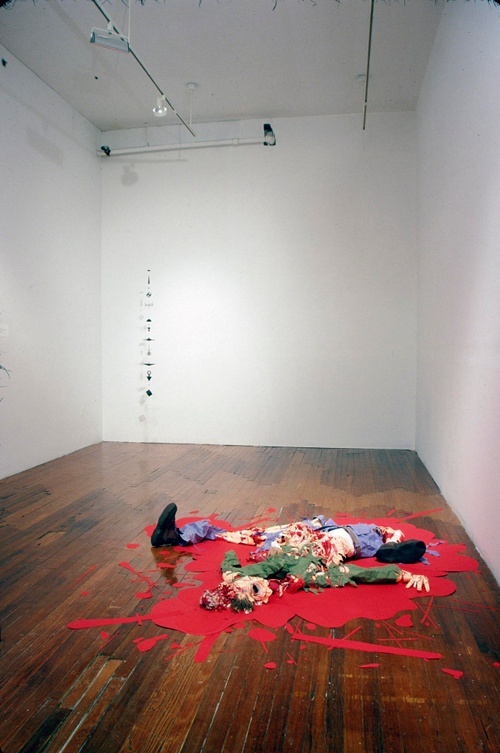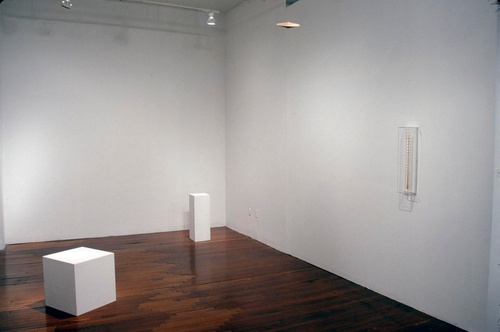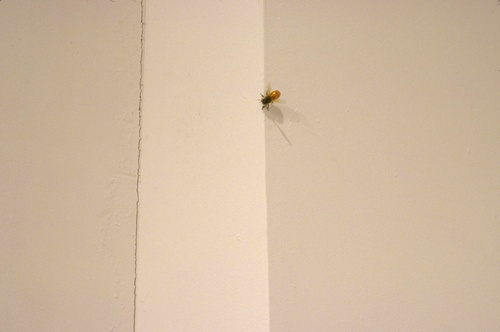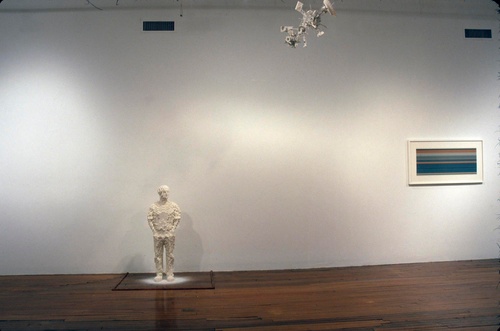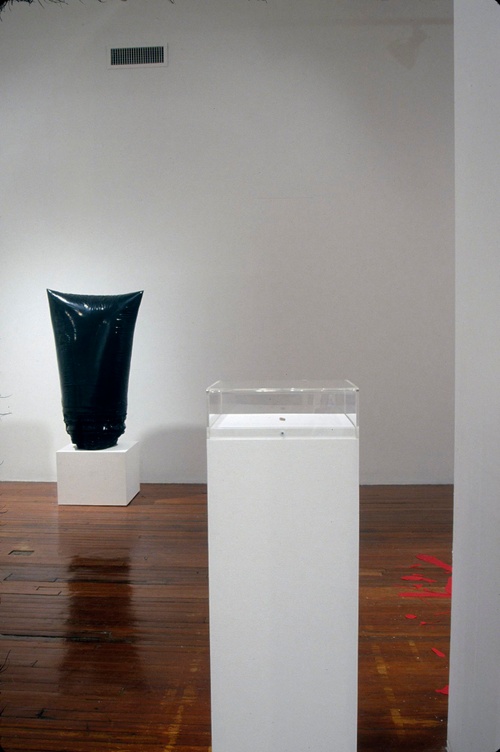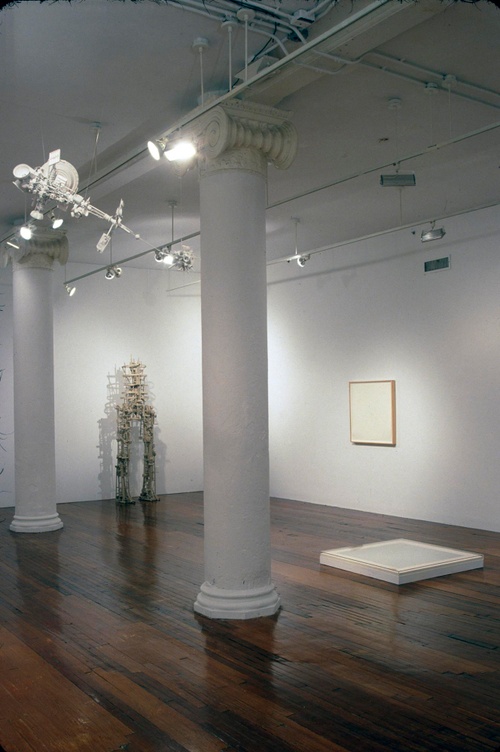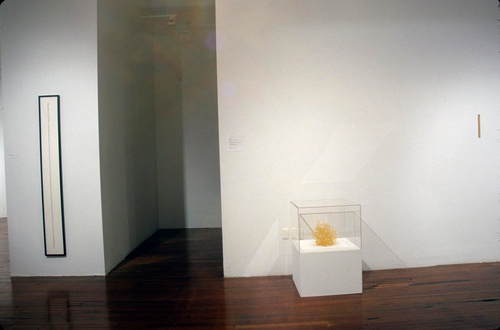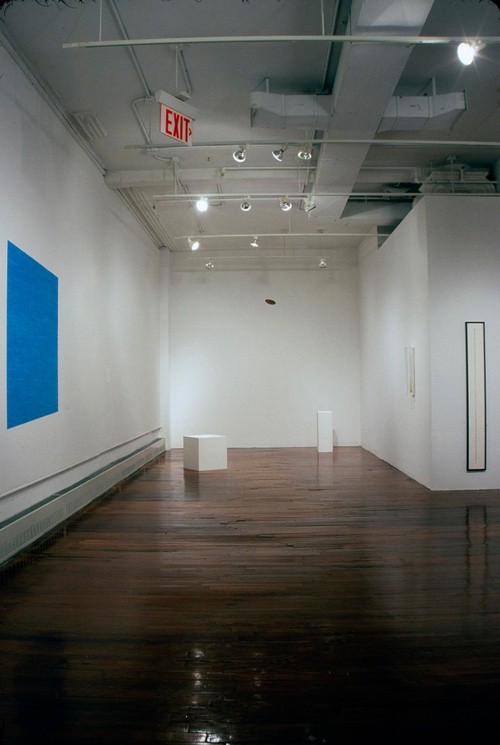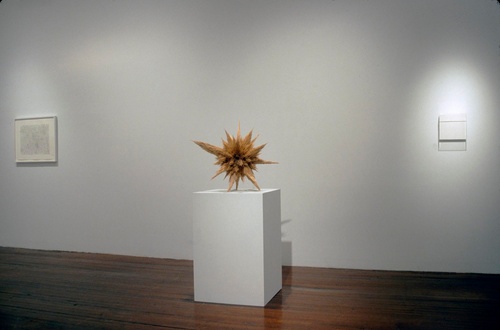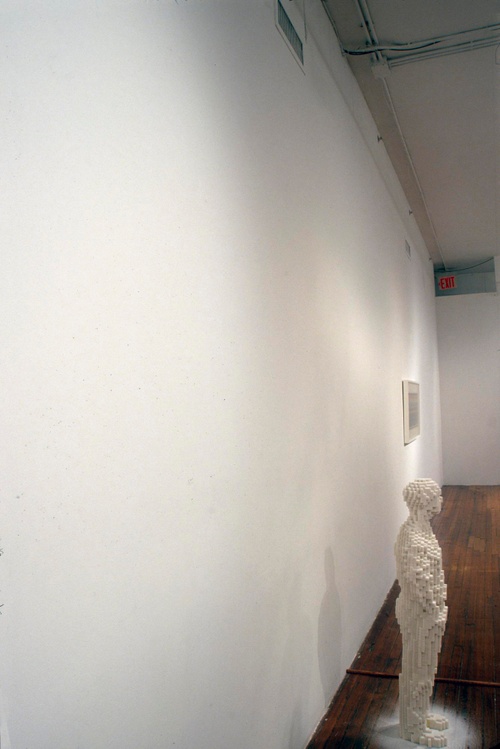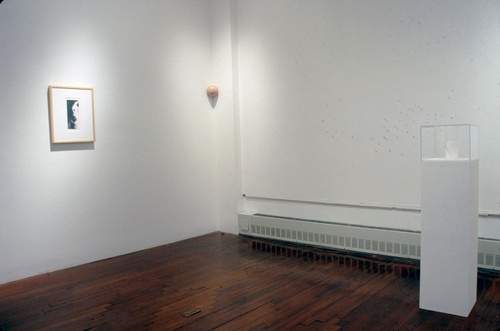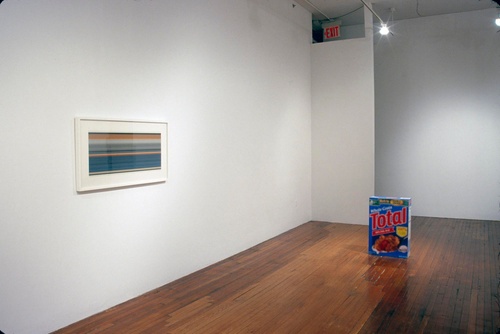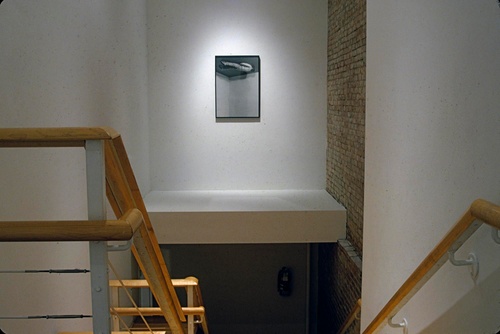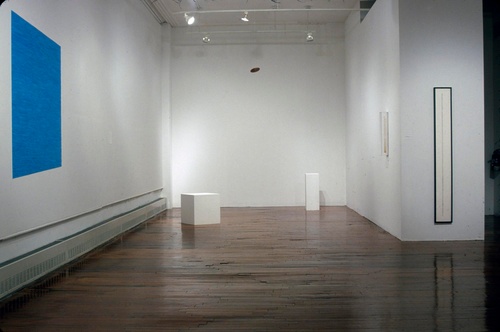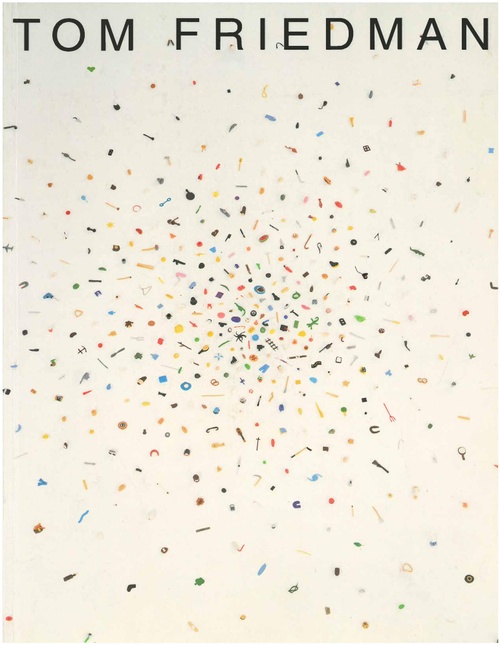Tom Friedman
Tom Friedman
One of the first things viewers tend to notice about Friedman’s art is that much of it is relatively small in scale. In fact, a disproportionate amount of his work seems to verge on the invisible. A piece of paper that has been stared at for 1,000 hours, or a sculpture pedestal over which a curse literally hangs, propose that the viewer contemplate an artwork that, for all intents and purposes, does not exist in way that can be confirmed by the senses. Similarly, a daddy-long-legs clinging to the side of another pedestal appears at first to be an incursion from the quotidian world to the world of art. To Friedman, the adjectives that viewers often attach to his art - fleeting, ephemeral, fragile and self-effacing - describe an experience that seems open and questioning, rather than rigid or absolutist. In this sense, Friedman represents a philosophical approach to making sculpture that can best be described as ‘anti-monumental.’
This exhibition of Tom Friedman’s work arrives at a time when many artists today are struggling to free themselves from the high-stakes culture wars of the late 20th century. From the formalist legacy of Clement Greenberg’s high modernism in the 1960s to the many-layered identity crises of the 1990s, contemporary art has struggled to merge with the world of ideas while maintaining a sense of its own material autonomy. Friedman’s work, which has shifted during the past five years from a relatively peripheral position in American art to the center of critical discourse, represents one of the most engaging and inventive approaches to making and thinking about art at the dawn of a new era.
A striking quality of Friedman’s art is the degree to which it is highly personalized, in the sense of the artist’s use of his own image or experience as part of the work’s concept and execution. Self-portraits abound in his oeuvre, but are always rendered in a quirky or startling manner. Such as the untitled piece from 1993-94 consisting of the artist’s face carved into a single aspirin or his life-sized self-portrait as a motorcycle accident victim (2000) - made entirely of colored construction paper. Despite the explicit nature of these images, their very fragility acts to fragment or suspend the impulse to connect them to a sensation of pain. Hot Balls (1992), containing several dozen balls and marbles of different sizes and colors - all of which were stolen from stores during a two-year period - hints at a covert artistic identity which is as immersed in kleptomania as creativity.
Yet another distinguishing characteristic of Friedman’s art has to do with the time and labor-intensive processes he often employs. As often as not, some of his most labor-intensive works start out by his proposing an idea to himself, such as a list of everything he can think of, or a map of the U.S. as it would appear if the world were upside down. From this starting point, Friedman does not so much will the piece into existence as gently coax it from its imaginary state into one that is more tactile. Sometimes, as with Loop (1995), a sculpture made from a box of cooked spaghetti that have been attached end to end to form a single, loopy spiral, the process that Friedman undertakes is both intricate and fraught with the possibility of a messy and frustrating failure. Despite the fact that several of the works in this exhibition took an unimaginably long time to produce, Friedman does not equate labor with aesthetic value.
Central to Friedman’s artistic mission is the transformation of the form and function of everyday materials. Toothpaste, jigsaw puzzles, soap, hair, laundry detergent, pencil shavings, toilet paper, bubble gum, garbage bags, toothpicks, sugar cubes and cereal boxes are all key ingredients - if not the sole materials - for many of the works in this exhibition. Friedman’s process often entails isolating and/or exaggerating the most typical function of these objects, until they become nearly unrecognizable. An untitled 1992 work, for example, consists of a single pencil shaving that could only have been created by painstakingly removing the entire surface of a standard pencil, without allowing the shaving to break. Another 1992 sculpture involved stuffing a garbage bag with hundreds of other garbage bags until the final capacity of the bag to hold its contents had been reached.
The role of color in Friedman’s work is especially intriguing, if only because he demonstrates a strong predilection for bright hues and, whenever possible, a kaleidoscopic assortment of colors. This does not seem intended to merely amuse the eye but rather to assign an indexical dimension to color, with the maximum number of colors referring to the greatest possible variety of experiences and objects in the world. Two of the works on view that directly refer to medicine appear to sum up this perspective. One is Small World (1997), in which a dazzling combination of hundreds of brightly-colored simulated pills, capsules, tablets and lozenges (made from Play-Doh) are arranged directly on the floor to suggest a gradual dispersion from the center outwards. Similarly, his standard gelatin capsule filled with extremely tiny colored balls (1995), would be a perfect replica of a commercial cold medicine, were it not for the fact that the sheer variety of colors sets it apart from the marketing-led product designs of the pharmaceutical industry. In order to restore the visual wonder summed up a single gelatin capsule, Friedman must first turn it into something it can never be.
One of the cumulative effects of viewing a range of Tom Friedman’s work is that most viewers find themselves happily (if gradually) adjusting their perceptual range to appreciate the artist’s attentiveness to detail, keen preference for small scale, and remarkable ability to transform the familiar into the unexpected. However, once we re-enter the ‘real’ world with our perceptions suitably altered, it becomes more difficult to experience things like toothpaste or spaghetti in quite the same way. Perhaps more pertinently, Friedman’s magnification of the detritus of daily life into something that deserves all our attention also has an inverted-mirror effect on phenomena that we might otherwise experience as overwhelming. In summary, Friedman’s art offers convincing firsthand evidence that if we wish to grasp the full expressive capacity of the apparently mundane swirl of things all around us, we need to begin by approaching everyday life itself as a continuously unfolding masterpiece.
-Dan Cameron, New Museum Senior Curator.
Tom Friedman was organized by the Southeastern Center for Contemporary Art, Winston-Salem, North Carolina.

